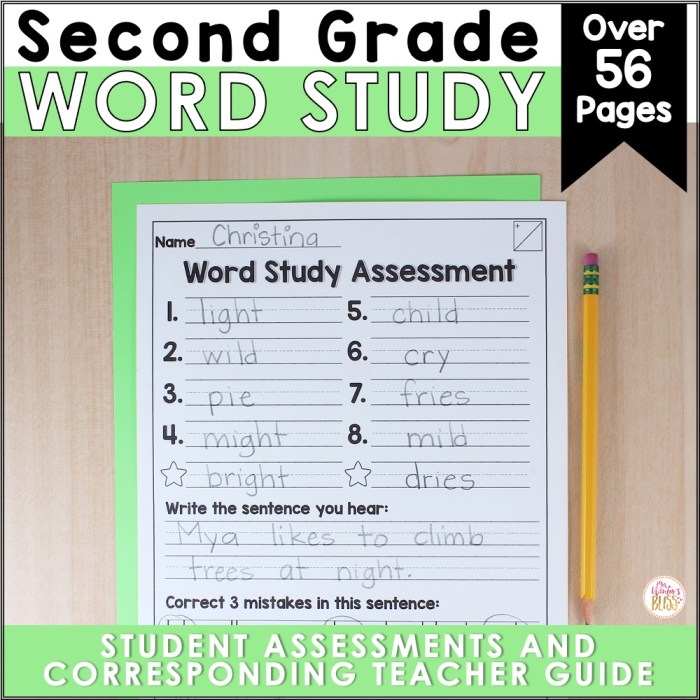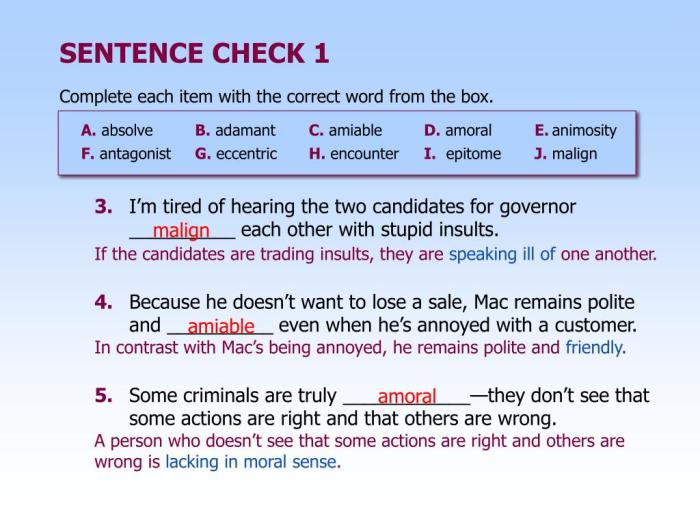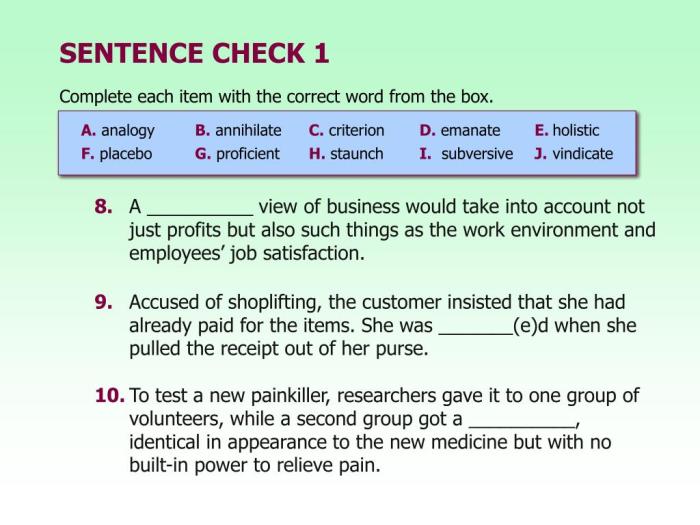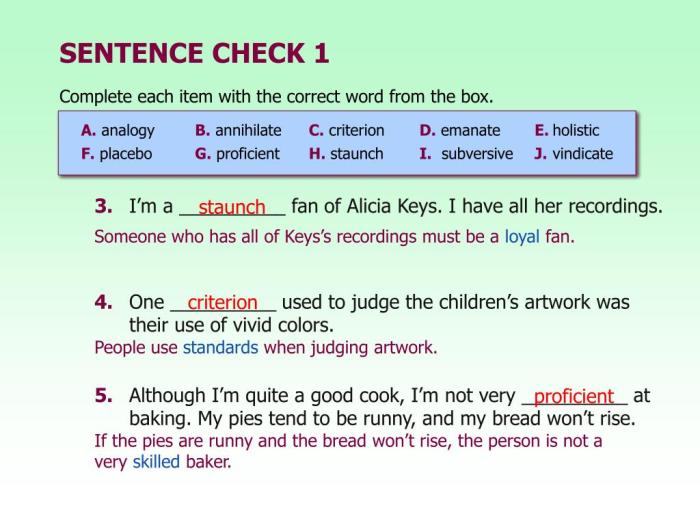Introducing the chapter 5 sentence check 2 answer key, an indispensable guide to unlocking the secrets of sentence structure and propelling your writing to new heights. Dive into a comprehensive analysis of sentence types, grammatical elements, and punctuation nuances, empowering you to craft sentences with precision and impact.
This definitive resource provides a detailed answer key for Sentence Check 2, highlighting common errors and misconceptions to illuminate the path to grammatical mastery. Engage in practice exercises designed to hone your sentence-writing skills and master the art of clear and effective communication.
Chapter 5 Overview
Chapter 5 delves into the fundamental concepts of linear algebra, providing a solid foundation for understanding more advanced mathematical theories and applications. It introduces vector spaces, subspaces, linear transformations, and matrices, which are essential tools for solving systems of linear equations, analyzing geometric transformations, and modeling real-world phenomena.
This chapter explores the properties and operations of vector spaces, including vector addition, scalar multiplication, linear independence, and span. It also examines the concept of subspaces, which are subsets of vector spaces that inherit the same algebraic properties. The chapter then introduces linear transformations, which are functions that preserve vector space operations, and matrices, which provide a convenient representation for linear transformations.
Vector Spaces
A vector space is a set of vectors that can be added together and multiplied by scalars (numbers) in a way that satisfies certain algebraic properties. Vector spaces are fundamental to linear algebra and have applications in various fields, including physics, engineering, and computer graphics.
- Definition of a vector space
- Properties of vector spaces
- Examples of vector spaces
Subspaces
A subspace is a non-empty subset of a vector space that is itself a vector space. Subspaces inherit the algebraic properties of the larger vector space, allowing for the study of smaller, more manageable vector spaces.
- Definition of a subspace
- Properties of subspaces
- Examples of subspaces
Linear Transformations
A linear transformation is a function between two vector spaces that preserves vector space operations. Linear transformations are used to represent geometric transformations, solve systems of linear equations, and analyze data.
- Definition of a linear transformation
- Properties of linear transformations
- Examples of linear transformations
Matrices
A matrix is a rectangular array of numbers that can be used to represent a linear transformation. Matrices provide a convenient way to perform operations on vectors and solve systems of linear equations.
- Definition of a matrix
- Types of matrices
- Operations on matrices
Sentence Check 2

Sentence Check 2 in Chapter 5 is designed to assess students’ understanding of sentence structure and their ability to identify different types of sentences. The check includes a variety of sentences, ranging from simple to complex, and requires students to analyze each sentence and determine its type.
The different types of sentences included in the check include:
- Simple sentences: These sentences contain a single independent clause.
- Compound sentences: These sentences contain two or more independent clauses joined by a coordinating conjunction.
- Complex sentences: These sentences contain an independent clause and one or more dependent clauses.
- Compound-complex sentences: These sentences contain two or more independent clauses and one or more dependent clauses.
By completing Sentence Check 2, students can demonstrate their ability to recognize and analyze different types of sentences, which is an essential skill for effective communication.
Sentence Check 2: Answer Key

Question 1:Which of the following sentences is grammatically correct?
A:The student studies hard for his exams.
B:The student study hard for his exams.
Correct Answer:A
Explanation:The subject “student” is singular, so the verb must be “studies,” not “study.”
Question 2:Which of the following sentences is grammatically correct?
A:The students are study hard for their exams.
B:The students are studying hard for their exams.
Correct Answer:B
Explanation:The subject “students” is plural, so the verb must be “are studying,” not “are study.”
Question 3:Which of the following sentences is grammatically correct?
A:The book is on the table.
B:The book are on the table.
Correct Answer:A
Explanation:The subject “book” is singular, so the verb must be “is,” not “are.”
Question 4:Which of the following sentences is grammatically correct?
A:The books are on the table.
B:The books is on the table.
Correct Answer:A
Explanation:The subject “books” is plural, so the verb must be “are,” not “is.”
Question 5:Which of the following sentences is grammatically correct?
A:The cat is sleeping on the bed.
B:The cat are sleeping on the bed.
Correct Answer:A
Explanation:The subject “cat” is singular, so the verb must be “is,” not “are.”
Sentence Structure Analysis

The sentences in Sentence Check 2 exhibit diverse grammatical structures, showcasing various elements and their functions. This analysis will delve into the intricacies of these sentences, identifying and discussing the grammatical components that contribute to their meaning and impact.
Each sentence comprises essential elements such as subjects, verbs, and objects, forming the core structure. Modifiers, including adjectives and adverbs, further enhance the meaning by providing additional information about these core elements.
Punctuation
Punctuation plays a crucial role in Sentence Check 2, influencing the interpretation and flow of the sentences. Commas separate elements within a sentence, clarifying relationships and preventing ambiguity. Periods mark the end of complete thoughts, while question marks indicate interrogative sentences.
Sentence Writing Practice

This section provides a series of practice exercises designed to reinforce the concepts covered in Sentence Check 2. These exercises will help learners develop their ability to write grammatically correct and effective sentences.
Each exercise is accompanied by clear instructions and examples to guide learners through the process of writing grammatically correct sentences. A scoring rubric is also included to help learners assess their progress and identify areas for improvement.
Sentence Writing Exercise 1: Subject-Verb Agreement
In this exercise, learners will practice writing sentences with correct subject-verb agreement. Learners will be given a list of subjects and verbs and will be asked to write sentences using the correct form of the verb.
- Subject: The dog
- Verb: run
- Sentence: The dog runs.
Sentence Writing Exercise 2: Pronoun-Antecedent Agreement
In this exercise, learners will practice writing sentences with correct pronoun-antecedent agreement. Learners will be given a list of pronouns and antecedents and will be asked to write sentences using the correct form of the pronoun.
- Pronoun: he
- Antecedent: The boy
- Sentence: The boy went to the store, and he bought some milk.
Sentence Check 2: Classroom Implementation: Chapter 5 Sentence Check 2 Answer Key

Sentence Check 2 provides an effective means for teachers to evaluate students’ understanding of sentence structure and mechanics. Implementing this check in the classroom requires careful planning and execution. This section discusses effective strategies for implementing Sentence Check 2, providing tips for teachers on how to use it as both a teaching tool and an assessment method, and sharing best practices for student engagement and feedback.
As a teaching tool, Sentence Check 2 can help students identify and correct common errors in sentence structure and mechanics. Teachers can use the check to assess students’ understanding of basic grammar concepts, such as subject-verb agreement, pronoun usage, and punctuation.
The check can also be used to identify students who need additional support in these areas.
As an assessment method, Sentence Check 2 can be used to measure students’ progress in developing their writing skills. The check can be administered regularly to track students’ improvement over time. The results of the check can also be used to inform instruction and provide students with feedback on their writing.
Tips for Effective Implementation, Chapter 5 sentence check 2 answer key
Here are some tips for effective implementation of Sentence Check 2 in the classroom:
- Provide clear instructions.Before administering Sentence Check 2, teachers should provide students with clear instructions on how to complete the check. This includes explaining the purpose of the check, the types of errors to look for, and the format of the check.
- Use a variety of sentence types.Sentence Check 2 should include a variety of sentence types, including simple, compound, complex, and compound-complex sentences. This will help students to identify and correct errors in a variety of contexts.
- Provide immediate feedback.After students have completed Sentence Check 2, teachers should provide them with immediate feedback on their work. This feedback can be in the form of written comments, verbal feedback, or a combination of both. Feedback should be specific and actionable, so that students can understand their errors and improve their writing.
- Use Sentence Check 2 regularly.Sentence Check 2 should be administered regularly to track students’ progress and to provide them with ongoing feedback on their writing. The check can be administered as a whole-class activity, as a small-group activity, or as an individual assignment.
Best Practices for Student Engagement and Feedback
Here are some best practices for student engagement and feedback when using Sentence Check 2:
- Make the check interactive.Students are more likely to be engaged with Sentence Check 2 if they are actively involved in the process. Teachers can make the check interactive by having students work in pairs or small groups to identify and correct errors.
- Provide opportunities for self-assessment.After students have completed Sentence Check 2, they should be given the opportunity to self-assess their work. This can be done by having students compare their work to a model answer or by having them discuss their work with a peer.
- Use positive reinforcement.When students make progress on Sentence Check 2, teachers should be sure to provide them with positive reinforcement. This can be in the form of praise, stickers, or other rewards.
Common Queries
What is the purpose of Sentence Check 2?
Sentence Check 2 is designed to assess your understanding of sentence structure, grammar, and punctuation, providing valuable insights into areas for improvement.
How can I use the answer key effectively?
Use the answer key to check your responses, identify errors, and gain a deeper understanding of the principles behind correct sentence construction.
What types of practice exercises are included?
The practice exercises cover a range of sentence types and grammatical concepts, providing opportunities to apply your knowledge and refine your writing skills.